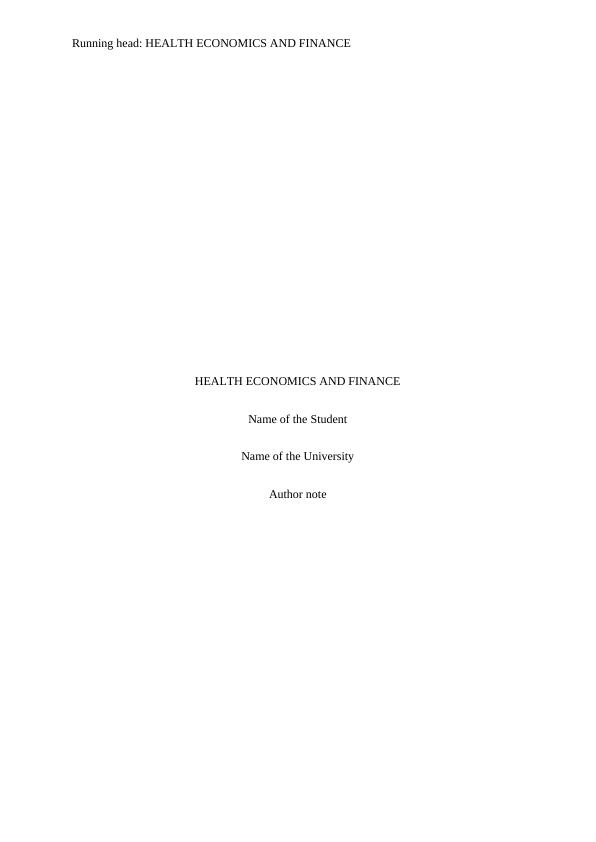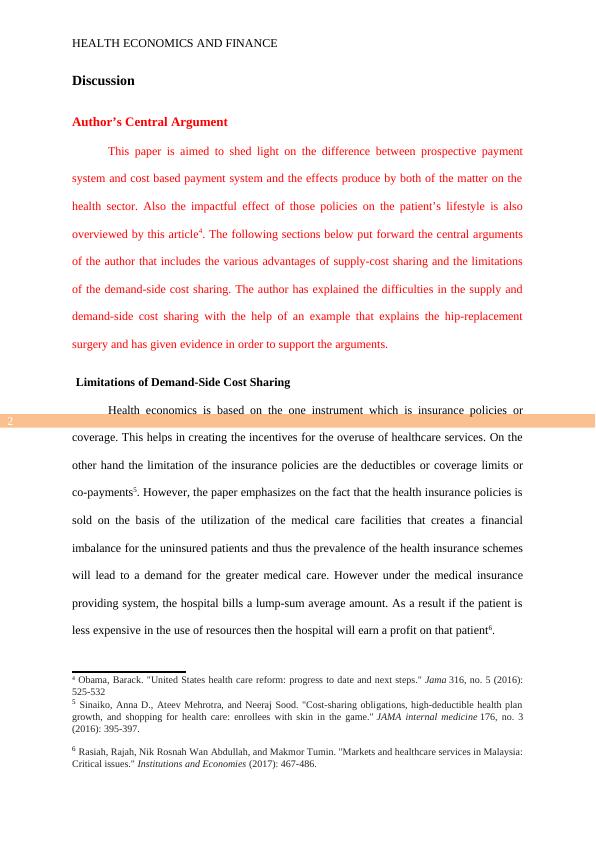Health Economics and Finance
Review of the rationale, limits, and comparative advantage of demand- and supply-side cost sharing in health care.
9 Pages1753 Words459 Views
Added on 2022-11-19
About This Document
This paper suggests two alternate strategies that will be helpful in controlling the various healthcare expenditure. The strategies that has been described in the paper includes demand-side cost sharing and supply side cost sharing. The paper also reviews the comparative advantage of the supply and demand side cost sharing, limits and rationale of the various healthcare expenses that in turn affects the healthcare expenditure.
Health Economics and Finance
Review of the rationale, limits, and comparative advantage of demand- and supply-side cost sharing in health care.
Added on 2022-11-19
ShareRelated Documents
End of preview
Want to access all the pages? Upload your documents or become a member.
increase demand of healthcare Assignment
|7
|1919
|88
National Health Coverage Plans, Reimbursements, and Quality
|7
|1514
|60
Supply-Side and Demand Side Cost Sharing In Healthcare Article 2022
|7
|1846
|23
HEALTHCARE SYSTEM IN ITALY
|5
|1235
|15
Health Economy Policy Model
|4
|649
|17
Financial Analysis || Assignment
|8
|1502
|39



